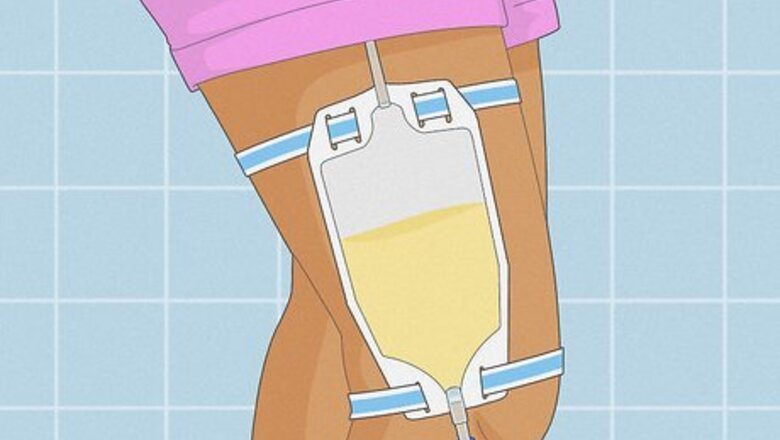
views
Starting the Draining Process
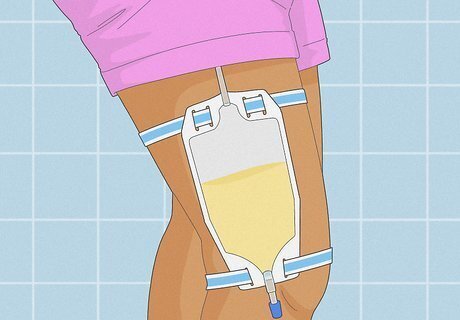
Drain your bag before it gets full. Always aim to drain your bag when it's about ¾ full. If you're unsure about when you'll be able to drain your bag again, it's always better to drain a partially full bag then to let your bag overflow. For an overnight bag, you may need to drain every 4-8 hours. For a leg bag, you may need to drain every 3-4 hours.
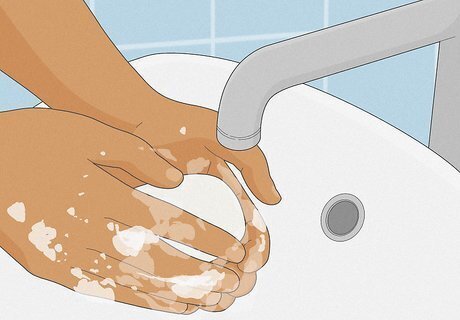
Wash your hands with soap and warm water. Run your hands under warm water, then lather them with an antibacterial soap. Rinse your hands thoroughly under a constant flow of clean, running water until all the lather has washed away. Then, dry your hands completely using a new paper towel. Using a paper towel instead of a reusable towel or rag helps prevent the transmission of germs as you work with your bag. If you don't have paper towels available, though, a clean cloth towel will work. Just be sure it hasn't been used by others since it was last washed. You may also put on a sterile set of disposable medical gloves if you have access to them.

Rinse the skin around your catheter connection with soap and water. In addition to washing your hands, it's good practice to gently rinse the skin where your catheter enters your body. Wipe down the area with a clean paper towel soaked in a mixture of warm water and a mild soap. Then, rinse the area with warm water until all the soap is gone. You can rinse the area either directly under a faucet or by wiping it down a few times with a wet towel or paper towel. You should aim to rinse the area around your catheter connection at least twice a day. You should also clean the area immediately after any time you've had to handle your catheter connection.
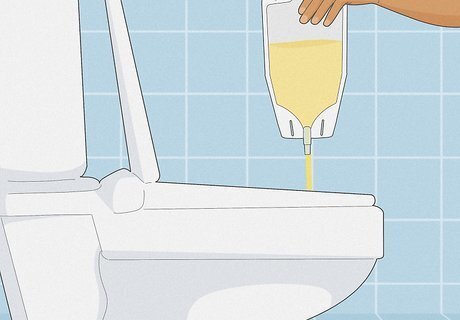
Release your bag from its straps or holder. Once your hands and catheter connection are clean, you can release your leg bag from its straps. If you're using a large bag, remove the bag from its holder. Try to hold the bag below hip level as you drain it. For an overnight bag, squeeze the plastic pieces on the drainage tube together gently until they come off the edge of the holder. Slowly slide the drainage tube out of the holder. Then, place the drainage tube over the toilet. For a leg bag, point the drainage tube down into the toilet but do not let the tube touch the edges of the toilet.
Emptying Your Bag

Raise the drainage tube straight up. The drainage tube is at the end of the catheter tube. It is connected to the catheter tube with a plastic colored clip. Make sure all the urine from the catheter tube drains into the catheter bag as you hold it straight. This will make it less messy when you empty it.
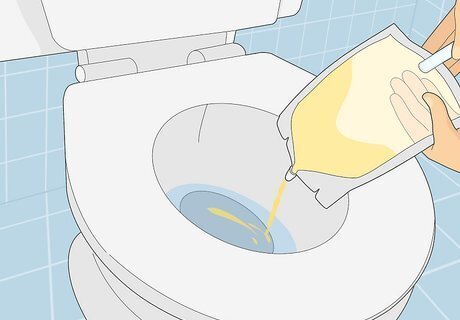
Position the bag over a toilet. This will make it easier to empty, as it will catch any overflow when you're detaching your bag. Be careful as you hold your bag over the toilet, though, as dropping your bag in the bowl would require you to replace it.

Remove the stopper or clamp on your bag. Your bag may have a stopper or clamp to prevent urine from leaking while your catheter is hooked up. Remove this stopper with your bag over the toilet.
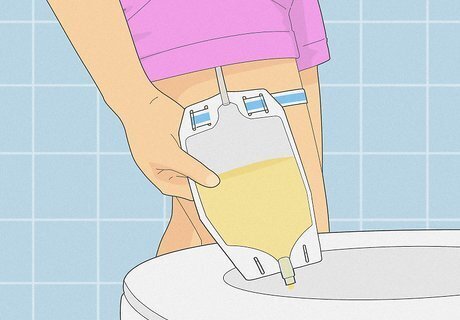
Empty your catheter leg bag using a valve. For a leg bag, turn the knob or valve at the bottom of the bag counter-clockwise to open it. Let the urine drain from the bag completely. Then, close the valve or knob by turning it back clockwise as far as it will go.
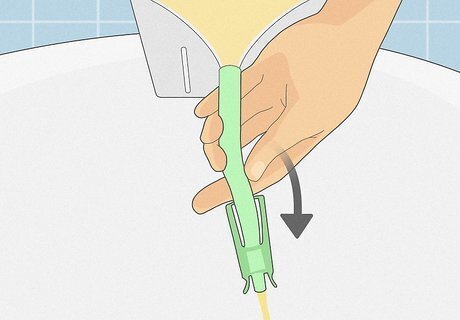
Empty your large bag by unclamping it. For a large bag, let the urine drain from the bag into the toilet. Once it has drained completely, close the metal clamp by pressing the metal pieces together. You can then clip the drainage tube back into the holder and reuse the catheter, if it is reusable.
Cleaning Your Bag After Emptying It
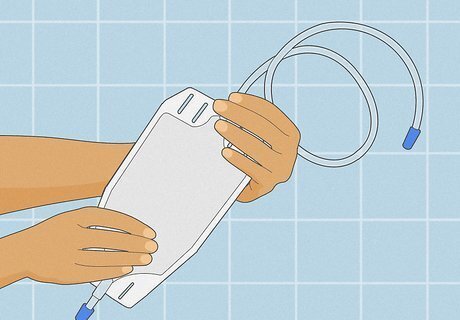
Keep the bag detached from your catheter tubing. You can't effectively rinse your bag if it's attached to your tubing. Do not replace your catheter tubing if you intend to clean your bag. Wait until after the bag is fully dry to reattach your tubes.
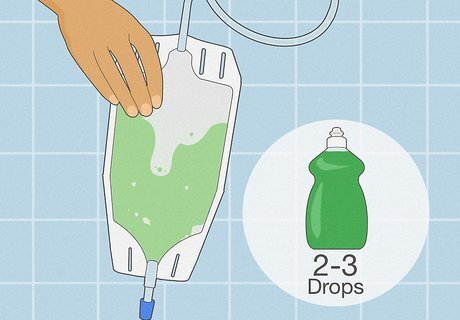
Pour a solution of soapy water into your bag. Mix 2-3 drops of mild detergent like dish soap into enough warm water to fill your bag. Pour the soapy solution into the bag and squish it around, making sure you get into the corners. Then, open the valve to drain the bag fully of all the soapy solution and suds.
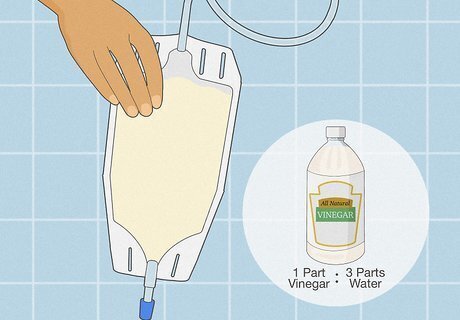
Soak your catheter bag with vinegar diluted in water. Mix a solution of 1 part white vinegar with 3 parts warm water. Funnel this solution into your bag and seal your bag off. Let your bag soak for 20 minutes. You should always rinse out the catheter bag before you reuse it. You should also rinse out the leg bag and let it dry if you are switching to a large catheter bag for the night. You should clean the leg bag every day if you use it daily and replace it with a new bag once a month.
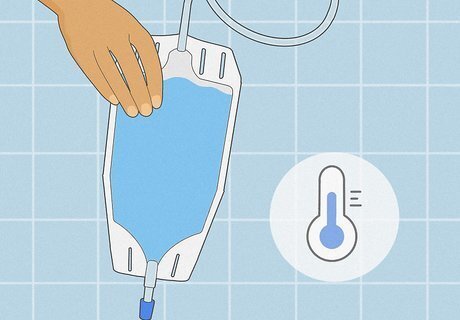
Rinse your bag with cold water. After your bag is done soaking, drain the vinegar solution out completely. Then, fill your bag with cold water and let it run through the bag's drain to completely remove the vinegar solution. Rinse your bag 2-3 times to get out all the vinegar wash.
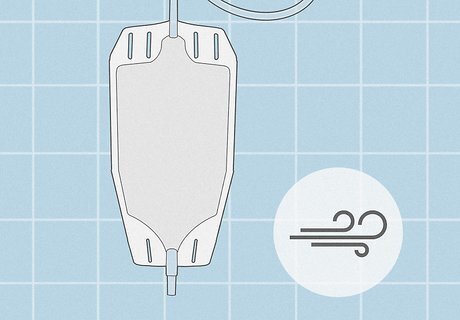
Hang the bag up to dry. Squeeze as much water out of the bag as possible. Then, hang the bag up with the valve open so that additional moisture can drain out. Your bag should be completely dry before you reuse it. If you cannot hang your bag up for the moment, wipe it down with a clean, dry towel or paper towel.



















Comments
0 comment